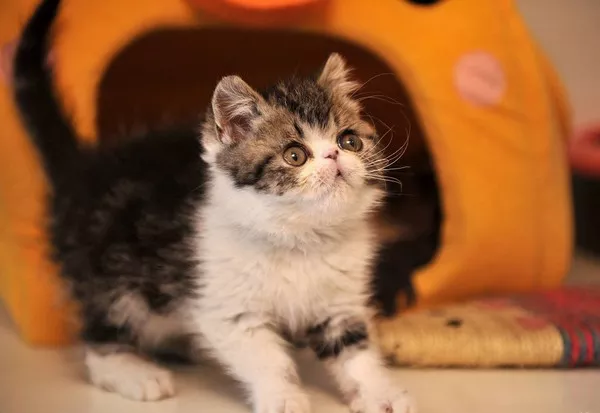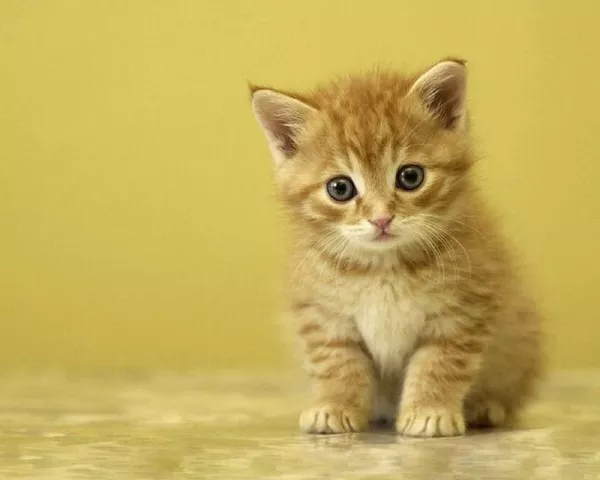In the world of feline companionship, the diversity of cat breeds and coat patterns can be both fascinating and bewildering. One of the most captivating coat patterns is the Calico, characterized by its distinctive tricolor fur arrangement. Calico cats are not a specific breed but rather a unique coat pattern found in various cat breeds. In this comprehensive guide, we will delve into the intriguing world of Calico cats, exploring their genetics, identifying characteristics, and providing invaluable insights for cat enthusiasts.
Understanding the Genetic Tapestry: The Foundation of Calico Coats
To grasp the essence of a Calico cat, it is essential to comprehend the underlying genetics that govern their coat patterns. Calico is not a breed but a color pattern, primarily dictated by the interaction of genes responsible for coat color. The key players in this genetic symphony are the genes controlling black, orange, and white colors.
Calico cats are almost exclusively female, and this peculiarity is deeply rooted in their genetic composition. The gene responsible for orange coloration, known as the “O” gene, is located on the X chromosome. Since females have two X chromosomes (XX), they can carry both the dominant and recessive forms of the “O” gene, resulting in the development of both orange and non-orange (black) patches in their fur.
Spotting the Canvas: Recognizing Calico Cat Characteristics
Identifying a Calico cat involves observing specific characteristics that distinguish them from other coat patterns. These distinctive traits can manifest in various ways, creating a unique tapestry on each Calico feline. Here are some key features to look for:
Tricolor Fur Composition: The hallmark of a Calico cat is its tricolor fur arrangement, typically combining white, black, and orange patches. These colors can manifest in a variety of patterns, creating a visually striking and diverse appearance.
Random and Irregular Patterning: Calico cats often exhibit a random and irregular distribution of colors on their fur. Unlike some other coat patterns with defined markings, Calicos showcase a seemingly chaotic yet aesthetically pleasing blend of colors.
Distinctive Face Masking: Some Calico cats may display unique face patterns, including masks or distinct colorations around their eyes and nose. This adds an extra layer of individuality to their overall appearance.
Variations in Fur Length: Calico patterns can be found in cats with different fur lengths, including short, medium, and long-haired varieties. This diversity contributes to the overall charm of Calico cats.
Dilute Calicos: In addition to the classic tricolor pattern, some Calico cats may have a dilute version of the colors, resulting in a softer and pastel-like appearance. Dilute Calicos often have light gray, cream, and pale orange hues.
Decoding the Genetics Behind Calico Variations
While the basic tricolor pattern defines Calico cats, variations in the intensity and distribution of colors can create a spectrum of unique appearances. Understanding the genetic factors influencing these variations can provide deeper insights into the captivating world of Calico cats.
Tabby Patterns in Calicos: In some cases, Calico cats may exhibit tabby patterns alongside their tricolor arrangement. Tabby patterns, characterized by stripes, swirls, or spots, add an extra layer of complexity to the coat. This occurrence is a result of the interaction between the tabby gene and the genes responsible for the Calico pattern.
Caliby Cats: A fascinating subset of Calico cats is the Caliby, which combines the Calico pattern with the tabby pattern. Caliby cats showcase the intricate blending of tricolor patches with the distinctive tabby stripes, creating a visually captivating and unique appearance.
Calico and White Cats: In some instances, Calico cats may have larger white areas on their coat, creating a striking contrast with the black and orange patches. These cats are often referred to as Calico and White or sometimes as Van Calicos.
Bi-colored Cats: Calico patterns can also appear in a bi-colored form, where the cat displays only two of the three characteristic colors. Bi-colored Calicos may have white fur combined with either black and white or orange and white patches.
Nurturing and Appreciating the Calico Companion
Beyond the aesthetics of their distinctive coats, Calico cats make wonderful companions with unique personalities. Nurturing a Calico companion involves understanding their individual needs and appreciating the charm they bring to the household. Here are some insights into caring for and appreciating your Calico feline friend:
Regular Veterinary Check-ups: Like all cats, Calicos benefit from regular veterinary check-ups to ensure their overall health and well-being. Female Calico cats, in particular, may have a higher likelihood of certain health issues, making preventive care essential.
Balanced Nutrition: Providing a balanced and nutritious diet is crucial for the health of any cat, including Calicos. Consult with your veterinarian to determine the best dietary plan based on your cat’s age, weight, and health condition.
Enriching Environment: Calico cats are known for their playful and spirited nature. Creating an enriching environment with toys, scratching posts, and interactive activities helps keep them mentally stimulated and physically active.
Grooming Routine: Depending on the length of their fur, Calico cats may require regular grooming to prevent matting and reduce shedding. Brushing their coat helps maintain its luster and reduces the risk of hairballs.
See Also:How Much Does a Lilac Point Calico Cat Cost?
Understanding Individual Temperament: Each Calico cat has a unique temperament, influenced by a combination of genetics and environmental factors. Some may be outgoing and affectionate, while others may be more reserved. Understanding and respecting their individuality strengthens the bond between you and your feline companion.
The Myth and Mystery Surrounding Male Calico Cats
While the overwhelming majority of Calico cats are female, there exists a rare anomaly – male Calico cats. Unraveling the mystery behind male Calicos involves delving into the intricate genetic dance that occurs during their development.
Male Calico cats are typically XXY, a condition known as Klinefelter syndrome. In this genetic configuration, the cat inherits an extra X chromosome, resulting in a mosaic of orange and black colors. However, male Calico cats are exceptionally rare, constituting only about 1 in 3,000 Calicos. Their scarcity adds an element of fascination to the world of Calico genetics.
Calico Cats in Different Cultures: Symbolism and Folklore
Throughout history, Calico cats have held special significance in various cultures and folklore. The tricolor pattern has been associated with different symbolic meanings, and Calicos have been both revered and feared in different traditions.
Japanese Folklore: In Japanese culture, Calico cats are considered symbols of good luck and prosperity. The “Maneki-neko” or beckoning cat, often depicted as a Calico, is believed to bring fortune and happiness to its owner.
American Folklore: In the United States, Calico cats are sometimes referred to as “money cats.” There is a belief that owning a Calico brings financial prosperity, and they are often seen as positive omens.
Superstitions and Myths: In some cultures, Calico cats are associated with superstitions. In Celtic folklore, for example, it was believed that a Calico cat could ward off evil spirits. Conversely, in American folklore, it was thought that dreaming of a Calico cat foretells upcoming troubles.
Understanding the cultural significance of Calico cats adds depth to the appreciation of these unique feline companions and their place in the tapestry of human history.
Conclusion: Celebrating the Diversity of Calico Cats
In conclusion, Calico cats are not merely a beautiful coat pattern but a fascinating intersection of genetics, artistry, and cultural symbolism. Identifying a Calico involves recognizing the tricolor fur arrangement, appreciating the individual variations, and understanding the genetic factors at play.
As companions, Calico cats bring joy, charm, and a touch of mystery to our lives. Nurturing their well-being, appreciating their unique personalities, and unraveling the genetic intricacies behind their coat patterns enhance the bond between humans and these captivating feline friends.
So, the next time you find yourself in the company of a tricolor feline companion, take a moment to marvel at the intricate tapestry that is the Calico cat – a living masterpiece shaped by genetics, history, and the enduring connection between cats and humans.
Related Topics:
How Much Does a Calico Cat Cost in India?
What is the Rarest Calico Cat Color?
Do Calico Cats Shed a Lot?
























